The Kuhli loach (Pangio Kuhlii) is an excellent aquarium cleaning crew addition. These beautiful little fish don’t get too big and make wonderful members of a peaceful tropical fish community.
Kuhli loaches are eel-like, bottom-dwellers, emerging from hiding at night to forage around the substrate for food scraps.
Read this guide to learn about Khuli loach’s care needs, dietary requirements, and more!
Kuhli Loach – At A Glance
Scientific Name
Pangio kuhlii
Common Name (species)
Kuhli loach, Leopard Loach, Coolie Loach, Cinnamon Loach, Giant Coolie Loach
Family
Cobitidae
Origin
Southeast Asia, including Borneo, Sumatra, Western Malaysia, Singapore, Java, and Thailand
Diet
Omnivore
Care Level
Intermediate
Activity
Active scavengers
Lifespan
Up to 10 years
Temperament
Peaceful community fish
Tank Level
Bottom-dweller during daylight, all areas at night
Minimum Tank Size
20 gallons
Temperature Range
73° to 86° F
Water Hardness
0 to 5 dGH
pH Range
5.5 to 6.5
Filtration/Flow Rate
Prefers well-oxygenated water with a good flow rate
Water type
Freshwater
Breeding
Egg layer, but challenging to breed in home tanks
Compatibility
Peaceful with small, non-aggressive community species
OK, for Planted Tanks?
Plant-safe
Natural Habitat
Khuli loaches live in mountain streams and slow-moving rivers in parts of Southeast Asia. The substrate is mostly sandy, soft, and covered with leaf litter from the shady forest canopy that overhangs the water.
The loaches are not schooling fish but are social fish that are usually seen living in small groups.
Size
Khuli loaches look like little worms, growing to reach between 3 and 4.5 inches long in the wild. However, in your fish tank, these cute eel-shaped fish are typically smaller than that.
Lifespan
Kuhli loaches have a lifespan of up to ten years in captivity as long as they are well cared for and enjoy a high-quality diet.
Activity Level/Temperament
Kuhli loaches are peaceful fish that fit well with other small, non-aggressive species.
These cool fish are primarily nocturnal, coming out of hiding when you turn your fish tank lights off and foraging around the substrate for scraps of food.
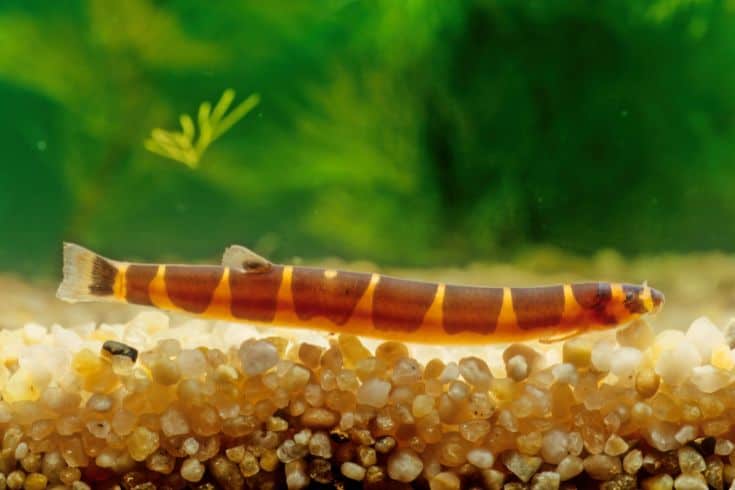
Kuhli loaches are highly active fish, darting all around the tank under the cover of darkness. When the tank lights come on, the loaches spend most of their time hiding and resting in crevices and caves. Be sure to cover your filter inlet pips, as the eel-like loaches will squirm inside to hide.
These fish are burrowers, so you must provide them with a soft, sandy substrate that replicates conditions in their wild habitat.
Compatibility and Tank Mates
In their natural habitat, Khuli loaches often live in groups, and it’s well worth replicating that in your aquarium.
Although they are not naturally schooling fish, living in a small shoal gives the fish a sense of security, making them more relaxed and less likely to succumb to the damaging effects of stress.
Tank mates
Since Khuli loaches spend most of their lives in hiding or swimming around the tank bottom, other peaceful bottom-dwellers, such as Corydoras catfish, make good tank mates for them.
In addition, non-aggressive fish that swim in the upper echelons of the water column are suitable tank mates for Khuli loaches, so tetras, danios, and rasboras make ideal tank mates.
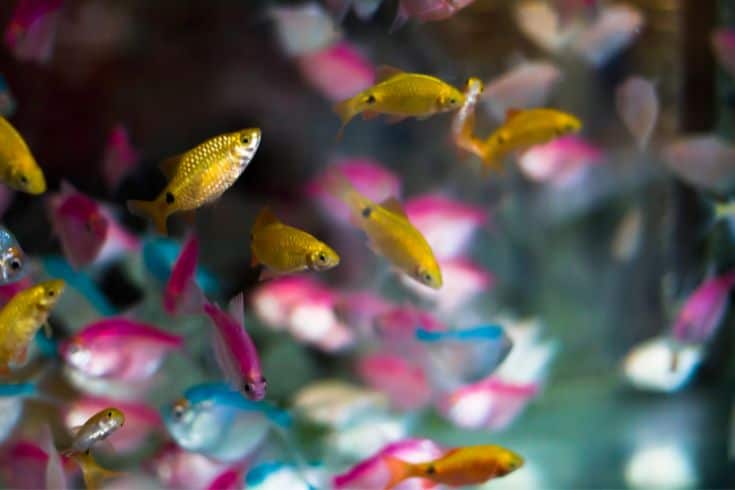
In addition, large shrimp make good cleanup crew companions for Khuli loaches.
Fish to Avoid
I recommend you avoid keeping large species of territorial fishes, such as cichlids and Oscars, as well as bullies, and fin nippers, including Angelfish and Tiger barbs.
Very small snails don’t make ideal companions for Khuli loaches, as they are usually viewed as a food source.
Feeding
To ensure your loaches are happy and healthy, it’s crucial that you feed them a correct diet in appropriate quantities.
What to Feed Kuhli Loaches
Kuhli loaches are omnivores. In the wild, the fish cruise the substrate, feeding on tiny crustaceans, insect larvae, and plant matter.
In the fish tank, these loaches are scavengers, foraging on the substrate and eating whatever scraps of food they can find. A good basic diet for Kuhli loaches should include high-quality fish flakes, and frozen meaty foods, such as daphnia, bloodworms, grindal worms, micro-worms, and brine shrimp.
How Much and How Often to Feed
The best time to feed your Khuli loaches is just before you switch the aquarium lights out at night and first thing in the morning.
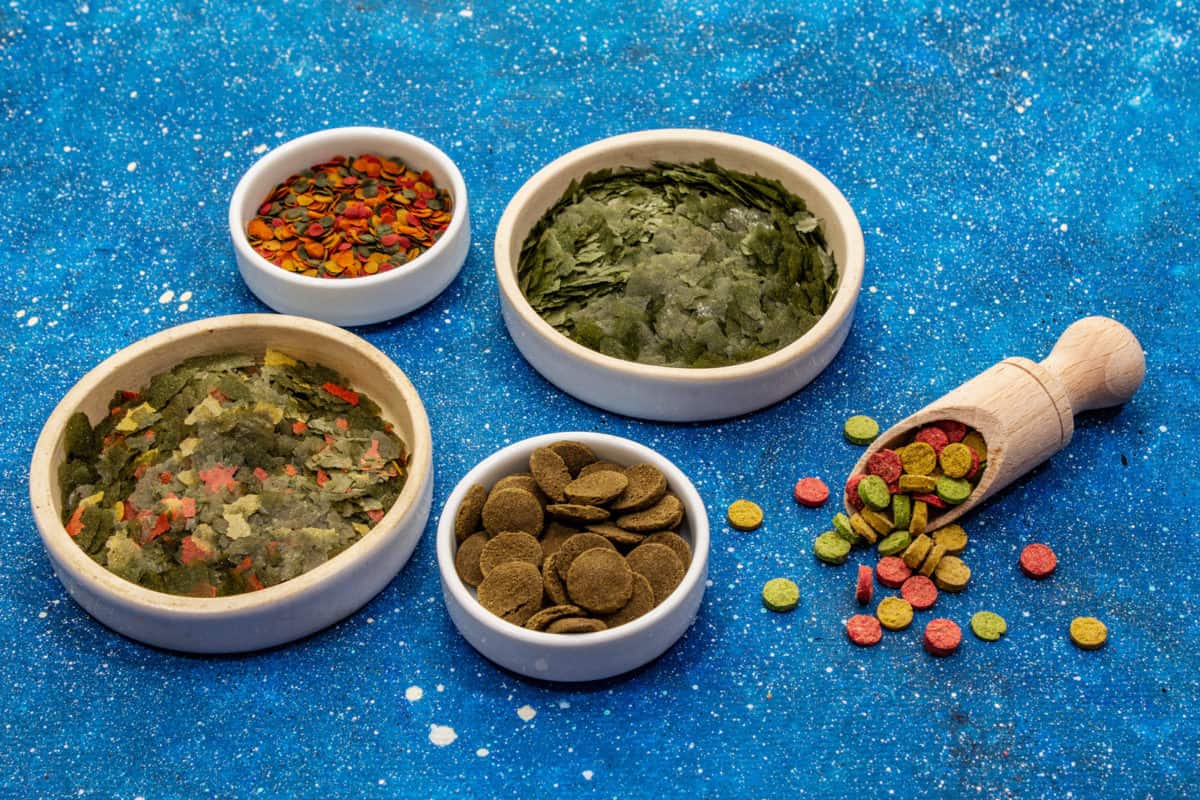
I generally feed my loaches twice a day, offering them just what they will clear up in a minute or two so that you don’t overfeed your fish.
Tank Requirements
Tank size
I recommend a minimum tank size of 20 gallons for Kuhli loaches, allowing 3 to 5 gallons of water per fish. A 10-gallon tank is really too small for these lively characters.
A rectangular tank with plenty of floor space works best for these highly active fish.
Kuhli loaches can jump, so you’ll need a tank with a cover slide or lid.
Tank Setup
Substrate
A soft sand substrate is the best choice for this bottom-dwelling, burrowing fish species. Add a few Indian Almond leaves to replicate the leaf litter found in the loaches’ natural habitat.
Decoration
The loache’s natural environment is heavily vegetated, so lush planting is essential in a tank situation.
You’ll need to provide the loaches with somewhere to hide away during the daytime, so include lots of tangled roots, caves, large rocks, and driftwood in your aquascape.
Habitat Requirements
Filtration
Kuhli loaches prefer well-oxygenated, clean water. An undergravel filter system works well with this species, provided a turnover rate of ten times per hour is achieved. You might need to add a canister filter or powerhead to provide the current the loaches need.
Cover the inline and outlet pipe of the filter system to stop the loaches from swimming inside and becoming trapped!
Water Parameters
Water Temperature
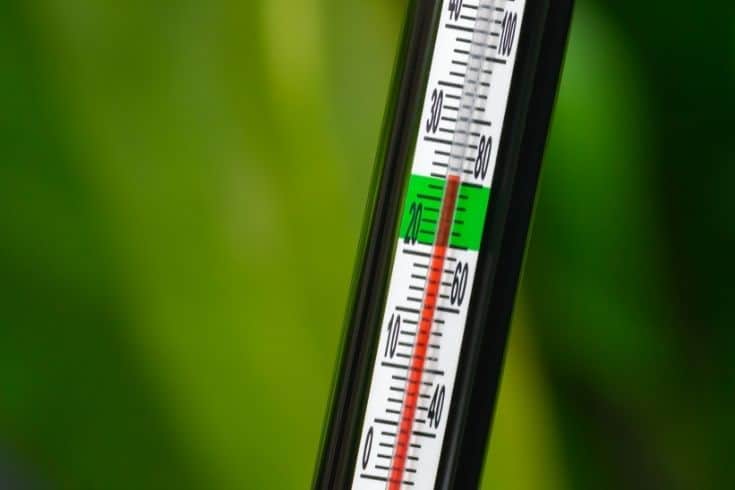
Kuhli loaches are tropical fish that need warm water of 73° to 86° F.
Water Hardness and pH Range
The water should be slightly acidic and soft with a hardness of between 0 and 5 dGH and a pH in the range of 5.5 to 6.5.
Lighting
In nature, the Khuli loach inhabits water bodies overhung by the rainforest canopy, so the lighting is generally dim and dappled.
You can replicate that by using floating plant species in your setup.
Tank Maintenance
Kuhli loaches need pristine water with plenty of dissolved oxygen to thrive, so we recommend 30% water changes every week.
Deep-clean the substrate once a week with an aquarium vacuum, paying particular attention to areas where debris accumulates, such as around plant bases, underneath decorations, and in the tank’s corners.
An undergravel filter needs minimal maintenance apart from an annual clean, but if you use another kind of filter system, you’ll need to clean the filter media and replace it regularly in line with the manufacturer’s directions.
Setting Up the Aquarium
Khuli loaches are quite sensitive to water conditions, so we recommend that you add these fish to an established tank rather than an immature setup.
However, if you want to set up your tank from scratch, start by assembling all the items you’ll need, including the following:
- Sandy substrate
- Lighting unit
- Filter system
- Heater
- Aquarium thermometer
- Decorations
- Dried Indian Almond leaves
- Plants
Setting Up Your Aquarium:

- Rinse the sandy substrate in running water to remove dust.
- Add 2 to 3 inches of the clean substrate to your tank.
- Install the heater and filter in the tank, but don’t switch them on yet.
- Fill the tank with dechlorinated water to just under the fill line. Pour the water over an upturned dish or plate to avoid displacing the substrate.
- To kick off the nitrogen cycle, add a pinch of fish food or a few drops of pure ammonia to the water.
- Wash the tank decorations, and add them to your aquarium.
- Prepare your plants by trimming off dead leaves or broken stems, and add them to your tank, leaving space between each for growth and spread.
- Switch on the filter and heater. Now, allow the tank to cycle for at least ten days before adding any fish. You’ll need to leave the tank lights on for eight to ten hours per day so that your plants can photosynthesize.
- Test the tank water daily until the levels of ammonia and nitrite and zero and nitrates are around 20 ppm or less. Now, you can add a few small fish.
Health and Disease
We don’t recommend Khuli loaches to beginners since the fish have tiny body scales and no head scales at all. That makes Khuli loaches more susceptible to diseases and renders them highly sensitive to most fish medications.
Signs of Good Health
Kuhli loaches usually hide during the day, emerging at night to socialize and scavenge for food.
These fish are typically most lively and active at night, darting around the tank, searching for food.
Red Flags
There are a few red flags that usually indicate health problems in your fish, including the following:
- Poor appetite
- Coming out mostly during the daytime
- Inactivity at night
- Swellings, reddened areas on the skin, and ulcers
- Rubbing or flashing against the substrate or solid objects in the tank
Common Health Issues and Treatment
Health Issue
Ich (White Spot Disease)
Symptoms or Causes
Ich is a very common disease that’s caused by an aquatic protozoan parasite.
Fish infected with Ich develop a sprinkling of tiny white spots on their fins, gill covers, and bodies. They also flash against the gravel and other solid objects in the aquarium.
Suggested Action
Raise the water temperature to 82o F for three days. Use an OTC White Spot Disease medication to treat the tank.
Health Issue
Flukes
Symptoms or Causes
Flukes is the term used to describe various types of external fish parasites. These macroparasites can often be seen with the naked eye attached to the fish’s skin or gills.
Suggested Action
Treat the fish tank with an OTC antiparasitic medication.
Health Issue
Fungal infections
Symptoms or Causes
White fluffy growths on the fish’s body, mouth, and head.
Suggested Action
Quarantine infected fish, and treat with an antifungal medication.
Health Issue
Bacterial infections
Symptoms or Causes
Sores and ulcers on the body and head, ragged, bloody fins.
Suggested Action
Treat the tank with OTC antibacterial treatment.
Breeding
Khuli loaches are difficult to breed. However, you might have success if you use a separate breeding tank.
Male or Female?
Khuli loaches are communal spawners, so you’ll stand more chance of breeding them if you keep a mixed group.
Sexually mature female Khuli loaches are larger and heavier-bodied than males, while males have a thickened, branched first pectoral fin ray.
Spawning Tank
Set up a shallow, dimly lit tank specifically for breeding purposes.
Use plenty of floating plants to diffuse the lighting and provide somewhere for the females to lay their eggs. Dense planting also encourages spawning, so include plenty of thick, bushy plants in the setup.
Keep the pH level at around 6.5.
To bring the fish into prime spawning condition, offer lots of live foods.
Eggs and Fry
The female fish lay bright green eggs that stick to the underside of floating plants, typically hatching after around 24 hours.
You must remove the adult Khuli loaches once the eggs have been deposited to prevent the parents from eating the eggs and fry.
Khuli loach fry will take commercial fry food, infusoria, and baby brine shrimp until they are large enough to cope with adult foods.
Availability
Kuhli loaches are available in most good fish stores and online for a few dollars per fish. Sometimes, you can get a better deal by buying several fish together, which is handy since the loaches prefer living in groups anyway.
Product Recommendations
- A fish net
- Algae magnet
- Aquarium thermometer
- Aquarium vacuum
- Books on keeping loaches
- Filter system
- Aquarium (minimum size 20 gallons)
- Heater
- High-quality tropical fish flakes
- Lighting unit
- Plants, including floating species
- Rocks, caves, driftwood, tangled roots
- Sandy substrate
- Selection of frozen foods
- Water dechlorinator
FAQs
Here are the answers to a few of your questions about keeping Khuli loaches.
Q: Do Kuhli loaches clean the tank?
A: Although not renowned as algae eaters, Khuli loaches can help to clean your tank by scavenging leftover fish food. In addition, the loaches’ burrowing activities help to stir up debris from the substrate that you can vacuum up.
Q: Do Kuhli loaches eat other fish?
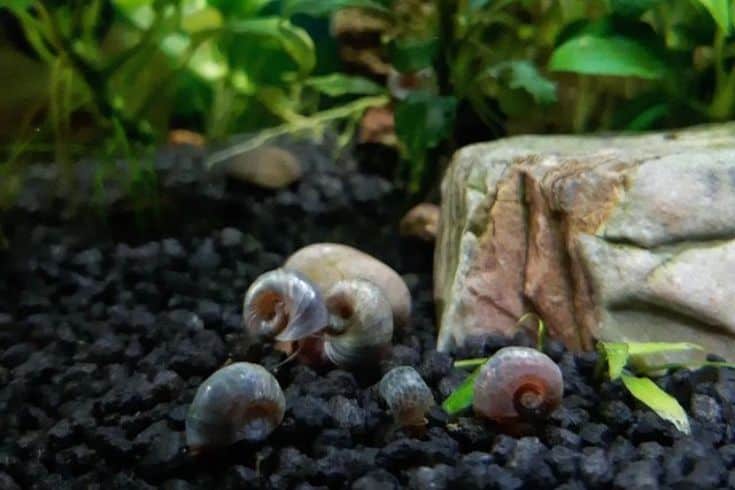
A: Khuli loaches prey on tiny crustaceans and snails, but they don’t generally eat other fish. That said, shrimplets and tiny fry that fit into the loaches’ mouths will be considered food.
Q: Can you keep a single Kuhli loach?
A: Khuli loaches do best when kept in small groups. A solitary loach will spend most of its time hiding away and will probably become stressed.
Q: Will Kuhli loaches eat fish eggs?
A: Khuli loaches will eat fish eggs and tiny fry.
Final Thoughts
Did you enjoy our guide to caring for the entertaining Kuhli loach? If you did, please share the article!
A small group of these nocturnal bottom-dwelling fish makes an excellent addition to a peaceful community tank. However, these scaleless fish need pristine water conditions and a mature tank to remain healthy, so we don’t recommend them to inexperienced fish hobbyists.
Did you successfully breed Khuli loaches? Tell us about your experience in the comments box below.
